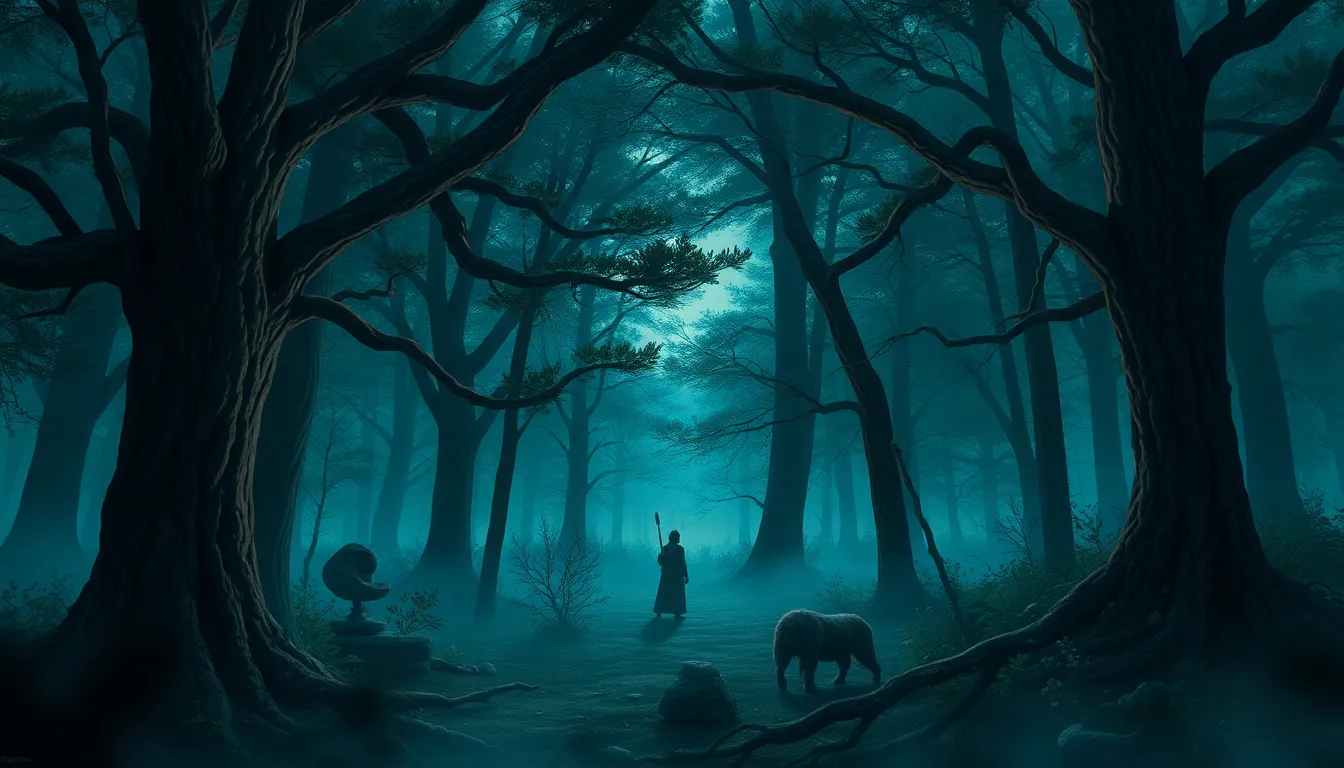The Whispering Pine: Myths of Wisdom from the Forest
I. Introduction
The Whispering Pine stands as a majestic and timeless figure within the world’s forests, embodying both beauty and mystery. Its tall, slender trunks and lush green needles evoke a sense of serenity and strength. Throughout history, this tree has held significant meaning for various cultures, often seen as a symbol of wisdom and resilience.
The purpose of this article is to explore the myths and wisdom associated with the Whispering Pine, delving into its cultural significance, spiritual roles, and the lessons it teaches us about life and nature. By examining the connection between the Whispering Pine and human experience, we can gain insights into how nature influences our thoughts, beliefs, and practices.
II. The Cultural Significance of Pine Trees
Pine trees have been revered across various cultures for centuries, often regarded as sacred entities that bridge the earthly and the divine. Their evergreen nature symbolizes eternal life, while their sturdy form represents strength and stability.
- A. Historical reverence for pine trees in various cultures: In many ancient civilizations, such as the Greeks and Romans, pine trees were associated with deities and were used in religious ceremonies.
- B. Symbolism of the pine in folklore and mythology: In Japanese folklore, the pine tree is a symbol of resilience, often depicted in art as a representation of longevity and steadfastness.
- C. The role of pines in indigenous traditions: For many indigenous peoples, pine trees are central to their spiritual practices, providing materials for shelter, medicine, and rituals.
III. The Whispering Pine: Origin of the Name
The name “Whispering Pine” evokes images of gentle breezes rustling through needles, creating a soft, soothing sound. The etymology of “whispering” can be traced back to the Old English word “hwisprian,” which means to speak softly.
Legends abound explaining the soft sounds made by the wind as it passes through the branches and needles of pine trees. Some cultures believe that these whispers carry messages from the ancestors, while others see them as the tree’s way of sharing its wisdom.
Artistic interpretations of this phenomenon can be found in various forms, from poetry to visual art, as creators seek to capture the essence of the Whispering Pine’s voice.
IV. Myths and Legends Surrounding the Whispering Pine
Across the globe, various myths and legends feature the Whispering Pine, often attributing wisdom and guidance to its presence.
- A. Notable myths from different cultures featuring pine trees: In Native American mythology, the pine tree is often seen as a protector, providing shelter and wisdom to those who seek guidance.
- B. Tales of wisdom imparted by the Whispering Pine: Many stories tell of travelers who, upon resting beneath a Whispering Pine, receive profound insights or visions that alter their paths.
- C. The archetype of the wise old tree in literature: Literature frequently portrays ancient trees as wise beings, with the Whispering Pine serving as a perfect example, offering counsel to those in need.
V. The Pine Tree as a Symbol of Resilience and Longevity
Pine trees are remarkable organisms, capable of thriving in harsh environments. Their biological characteristics symbolize endurance and adaptability.
- A. Biological characteristics of pine trees that symbolize endurance: Pines can withstand extreme weather, poor soil conditions, and even fire, showcasing their resilience.
- B. Myths illustrating resilience through the Whispering Pine: Stories often highlight how the Whispering Pine stands tall against storms, serving as a beacon of hope for those seeking shelter.
- C. Lessons on perseverance derived from the life cycle of pines: The life cycle of a pine tree, from seedling to towering giant, teaches us about growth, patience, and the importance of nurturing one’s roots.
VI. The Whispering Pine in Spiritual Practices
The Whispering Pine holds a significant place in various spiritual practices, often used as a focal point for meditation and reflection.
- A. The role of pine trees in meditation and mindfulness: The calming presence of pine trees creates an ideal environment for mindfulness practices, allowing individuals to connect with nature and themselves.
- B. Rituals and ceremonies involving the Whispering Pine: Many cultures incorporate pine branches or cones in their rituals, symbolizing purification and healing.
- C. Personal anecdotes of spiritual experiences in pine forests: Many people recount transformative experiences while walking through pine forests, feeling a deep sense of peace and clarity.
VII. Nature’s Wisdom: Lessons from the Whispering Pine
The Whispering Pine offers practical wisdom through its existence, showcasing the interconnectedness of life.
- A. Practical wisdom derived from observing pine ecosystems: The intricate relationships between pine trees, wildlife, and the environment teach us about balance and interdependence.
- B. The interconnectedness of life as depicted by the pine forest: A healthy pine forest thrives on collaboration, where each organism plays a role in sustaining the ecosystem.
- C. How the Whispering Pine teaches us about balance and harmony: The gentle sway of the pine branches reminds us of the importance of flexibility and adaptability in our lives.
VIII. The Environmental Importance of Pine Forests
Pine forests play a crucial role in maintaining ecological balance and supporting biodiversity.
- A. Ecological role of pine trees in their habitats: Pines provide habitat for a variety of species, contribute to soil health, and play a vital role in carbon sequestration.
- B. Threats to pine forests and the impact on biodiversity: Deforestation, climate change, and pest infestations threaten pine forests, leading to a decline in biodiversity.
- C. Conservation efforts inspired by the wisdom of the Whispering Pine: Many conservation initiatives focus on protecting pine forests, driven by the understanding of their ecological importance.
IX. Modern Interpretations and Representations of the Whispering Pine
In contemporary culture, the Whispering Pine continues to inspire artists, writers, and environmentalists alike.
- A. The pine tree in contemporary art and literature: Artists often depict the Whispering Pine as a symbol of nature’s beauty and resilience, while writers explore its themes in poetry and prose.
- B. Influence of technology on perceptions of nature’s wisdom: In an increasingly digital world, the Whispering Pine serves as a reminder of the importance of reconnecting with the natural world.
- C. The future of the Whispering Pine in a changing world: As we face environmental challenges, the lessons of the Whispering Pine become ever more relevant, urging us to protect and cherish nature.
In conclusion, the Whispering Pine stands not only as a beautiful part of our natural landscape but also as a profound symbol of wisdom, resilience, and interconnectedness. By embracing the lessons it offers, we can cultivate a deeper understanding of our place within the natural world and strive to live in harmony with it.



